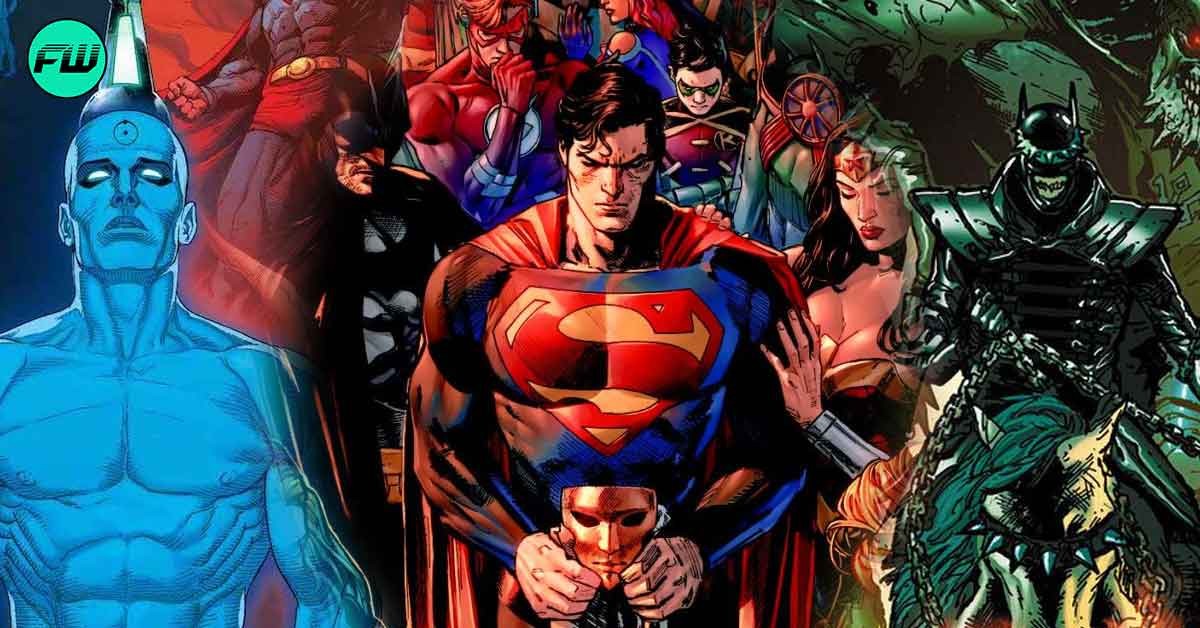In the vast and intricate world of comic books, few things capture the imagination of fans quite like crossover events. These epic storylines bring together heroes from different corners of the universe, uniting them against formidable threats that test their mettle and redefine the very nature of teamwork. Throughout the history of DC Comics, there have been numerous crossover events that have left an indelible mark on the comic book landscape. Here, we delve into 10 unforgettable DC crossover events that have not only shaped the stories within their pages but also the way fans perceive the interconnectedness of their favorite characters.
10. Infinite Frontier (2021)
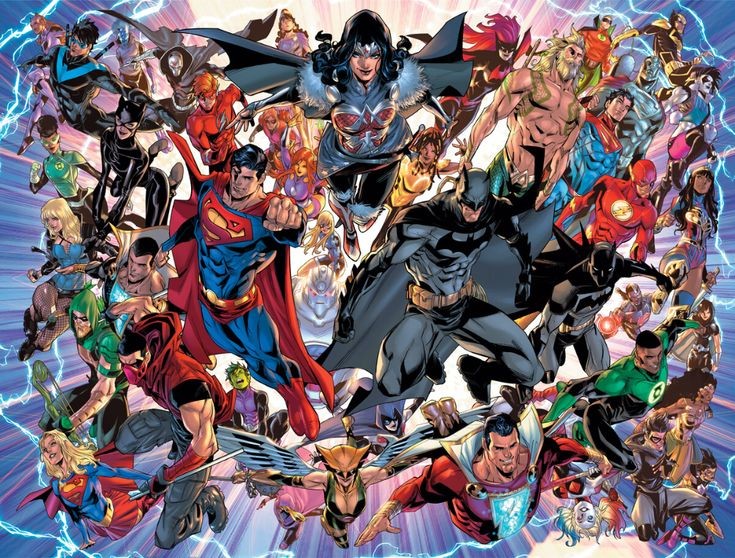
Written by Joshua Williamson and illustrated by various artists, Infinite Frontier serves as a thematic bridge between the tumultuous events of Dark Nights: Death Metal. After the cataclysmic events of Death Metal, the fabric of the DC multiverse has been reshaped, and familiar characters find themselves grappling with a changed reality. Infinite Frontier picks up with heroes and villains alike trying to make sense of the new status quo and the multitude of possibilities that have emerged. The story opens with the return of characters thought lost, as well as the emergence of alternate versions of heroes and villains from various realities.
Led by Wonder Woman and other iconic characters, the heroes embark on a journey to explore the Infinite Frontier, a vast and uncharted landscape of possibilities. As the story unfolds, the heroes encounter both familiar and new challenges. They confront threats that exploit the chaos resulting from the reshaping of reality, all while attempting to establish a sense of order and purpose in this new universe. Throughout Infinite Frontier, characters confront their pasts, question their identities, and grapple with the notion of free will in a reality where countless paths are open to them.
9. DC vs. Marvel (1996)

This limited series, written by Ron Marz and illustrated by various artists, pitted some of the most beloved characters from both publishers against each other. The storyline revolves around two god-like beings, who embody the fundamental aspects of their respective universes. Eons ago, they decided to settle their rivalry by having their respective champions fight in one-on-one battles. The outcomes of these battles would determine the fate of the merged universes.
The storyline features intense battles that highlight the strengths, abilities, and unique qualities of characters from both universes. The fights create memorable moments and spark debates among fans about the outcome of these epic confrontations like Superman vs. Hulk, Batman vs. Captain America, Wonder Woman vs. Storm, and more. The storyline weaves together a tapestry of fights and alliances, showcasing the clash of ideologies and the deep connections between characters from different worlds.
8. Heroes in Crisis (2018-2019)
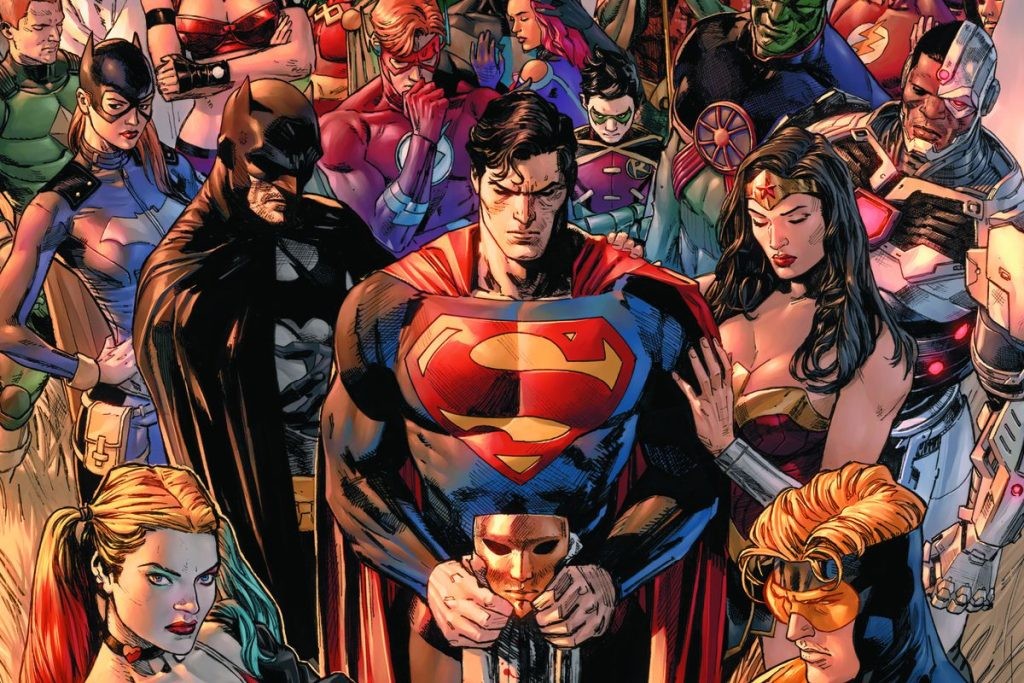
Written by Tom King and illustrated by Clay Mann. This storyline takes a unique and introspective approach, delving into the psychological toll that a life of heroism can exact on even the mightiest of superheroes. Set against the backdrop of the secluded Sanctuary, a secret facility designed to help heroes cope with trauma, the story explores the vulnerabilities and emotional struggles of these larger-than-life characters. The narrative kicks off with a tragedy at Sanctuary, resulting in the deaths of multiple heroes who sought solace there. The incident shakes the superhero community to its core, as both heroes and the public grapple with the loss of beloved figures with the main suspects being Booster Gold and Harley Quinn.
As the investigation unfolds, heroes like Superman, Batman, and Wonder Woman attempt to uncover the truth while grappling with their own trauma. The events at Sanctuary force these heroes to confront their inner demons and address the emotional scars that come with their line of work. Heroes in Crisis is a thought-provoking and emotionally charged storyline that challenges traditional superhero narratives by addressing the psychological toll of being a hero. Through its exploration of trauma, vulnerability, and the complexities of heroism, the event offers a unique perspective on the inner lives of these iconic characters, paving the way for more nuanced and humanized portrayals of superheroes within the DC universe.
7. Doomsday Clock (2017-2019)
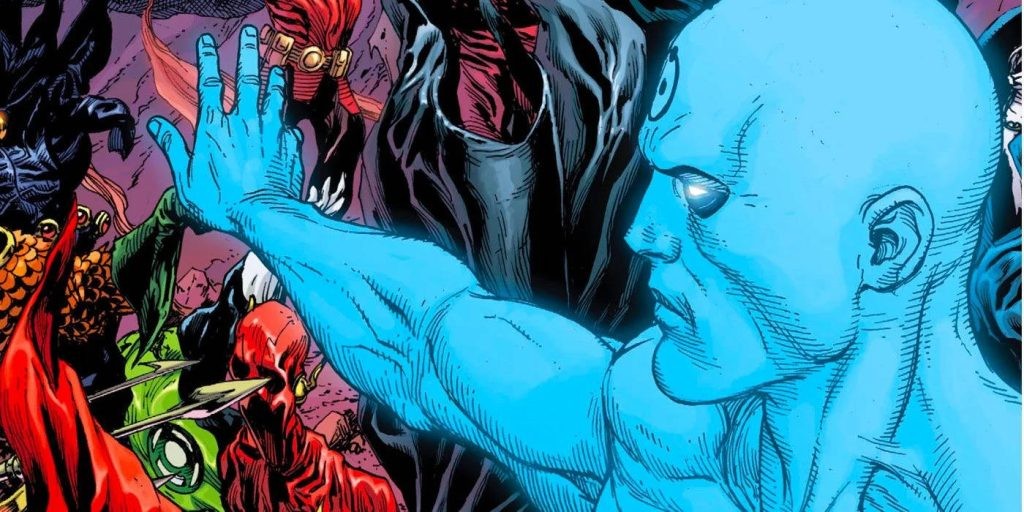
A sequel to Watchmen, while also exploring the impact of Watchmen’s characters on the larger DC universe written by Geoff Johns and illustrated by Gary Frank. The story begins in a world on the brink of disaster, as geopolitical tensions escalate and metahumans face increasing hostility from governments and the public. Against this backdrop, the mysterious appearance of Superman’s iconic “S” symbol in Russia raises concerns about an impending superhuman conflict. Meanwhile, the characters from Watchmen, including Doctor Manhattan, Rorschach, and Ozymandias, play a pivotal role in the events that unfold.
As the story progresses, Doctor Manhattan’s involvement becomes central, revealing his manipulation of the DC universe’s timeline and history. The characters from Watchmen are integrated into the DC universe’s continuity, leading to encounters with iconic DC heroes like Superman and Batman. The narrative explores themes of power, responsibility, and the nature of reality itself. A bold and thought-provoking exploration of superhero mythology, the ethical implications of immense power, and the legacy of iconic characters. By intertwining the narrative threads of Watchmen and the DC universe.
6. Dark Nights: Metal (2017-2018)
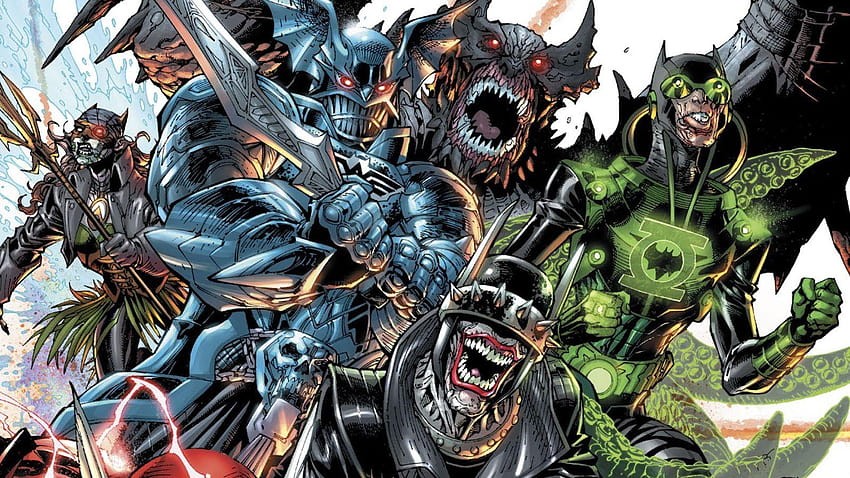
A high-octane DC Comics event written by Scott Snyder and illustrated by Greg Capullo. This storyline takes readers on a thrilling and cosmic journey that delves into the darker corners of the DC universe, introducing new threats, alternate realities, and a sense of grandeur. The story begins with Batman uncovering a hidden history of the DC universe, revealing the existence of a dark multiverse composed of nightmarish alternate realities. These dark universes are born from the fears and failures of the main DC universe, resulting in twisted and malevolent versions of familiar characters.
As the narrative unfolds, the dark forces from the dark multiverse begin to invade the main DC universe, led by the enigmatic and monstrous Barbatos. Batman, along with allies such as Wonder Woman, Superman, and the Justice League, must confront these nightmarish versions of themselves and prevent the dark multiverse from consuming their reality. To do so, the heroes must uncover hidden secrets and artifacts, such as the powerful metal known as Nth Metal. The journey takes them through various dimensions, from the subterranean realms of Hawkman’s past to the celestial worlds where the multiverse’s cosmic forces reside.
5. Forever Evil (2013-2014)
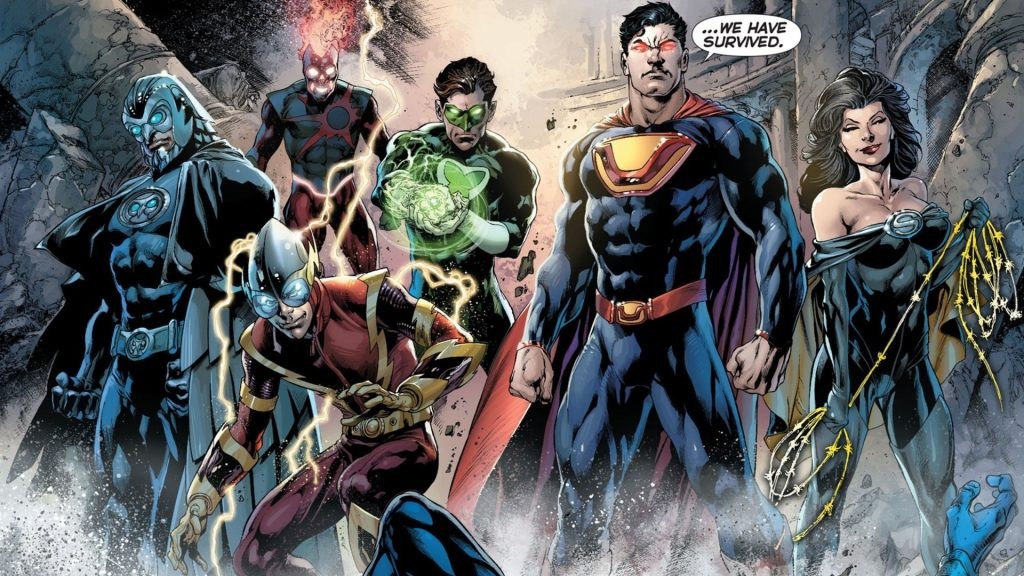
Another event from written by Geoff Johns and illustrated by David Finch. This storyline takes place in the aftermath of the Trinity War and explores a world plunged into darkness and chaos when the Justice League’s greatest nemesis, the Crime Syndicate of America from an alternate Earth, arrives to conquer and subjugate it. When the Crime Syndicate eliminate the Justice League, the Syndicate reveal their true intentions: to take over the world and rule with an iron fist. As the Justice League’s absence leaves a power vacuum, villains and anti-heroes must step up to oppose the tyranny of the Crime Syndicate and their enigmatic leader, Ultraman, Owlman, Superwoman, and more.
As the villains resist the oppressive regime, Lex Luthor takes on an unexpected role as one of the story’s central protagonists. Luthor forms a coalition of anti-heroes, including Captain Cold, Black Manta, and others, to take down the Crime Syndicate and save the world. The narrative also explores the dark motives and complex dynamics of the Crime Syndicate members themselves. Forever Evil is a captivating exploration of heroism, villainy, and the potential for redemption. By placing villains in the spotlight and challenging traditional character dynamics, the storyline adds complexity to the DC universe while examining the motivations and choices that define its characters’ paths.
4. Flashpoint (2011)

Barry Allen wakes up in an alternate reality where the world has been dramatically changed. As he tries to understand what has happened, Barry realizes that his actions as the Flash have caused a ripple effect that has altered the entire timeline. In this alternate reality, the world is on the brink of collapse. Aquaman and Wonder Woman are engaged in a global war that threatens to destroy the planet. Superman is missing, and Gotham City is now a crime-ridden wasteland controlled by Thomas Wayne, Bruce Wayne’s father. Barry Allen’s powers are fading, and he must navigate this unfamiliar world to find a way to restore the timeline and prevent the dire consequences of his altered actions.
As Barry races against time, he encounters alternate versions of familiar characters, some of whom have taken on drastically different roles due to the changed timeline. With the help of unlikely allies, including a gritty Batman and the enigmatic Thomas Wayne, Barry uncovers the shocking truth behind the altered reality and the key to setting things right. Flashpoint is a captivating exploration of the consequences of altering time and the essence of heroism. By presenting an alternate timeline that challenges familiar norms, the storyline showcases the resilience of characters while underscoring the complexity of the DC universe’s multiverse structure.
3. Blackest Night (2009-2010)
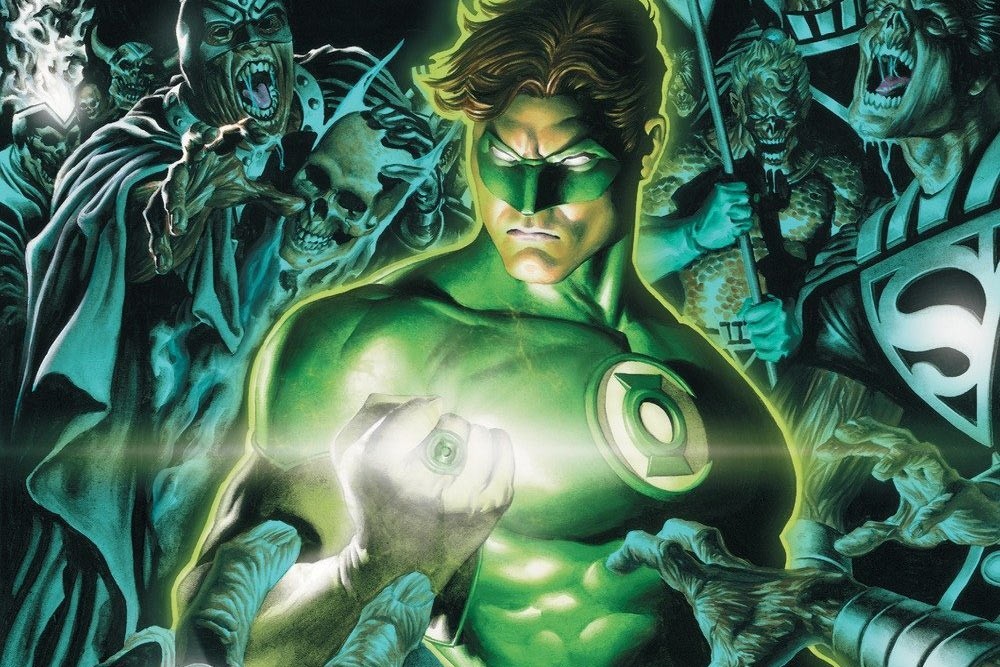
The emergence of a malevolent force known as the Black Lantern Corps, a faction of resurrected deceased individuals who wield the power of death and seek to extinguish all life in the universe. With the return of several deceased characters, including heroes and villains, as Black Lanterns. These twisted versions of the deceased are driven by the entity known as Nekron, who aims to plunge the universe into darkness by exploiting the emotional spectrum—emotions like hope, compassion, and fear. While also exploring the interplay between light and darkness, both in terms of physical light constructs and the metaphorical battle between hope and despair.
As the Black Lanterns begin to sow chaos and destruction, the surviving heroes band together to confront this existential threat. Characters from across the DC universe, including Green Lanterns, members of the Justice League, and even former enemies, unite to combat the Black Lanterns and their twisted machinations. Throughout the storyline, characters confront their deepest fears, regrets, and emotions as they grapple with the return of loved ones who have become Black Lanterns. The emotional turmoil of the characters adds a complex layer to the narrative, as they strive to overcome their own doubts and darkness.
2. Infinite Crisis (2005-2006)
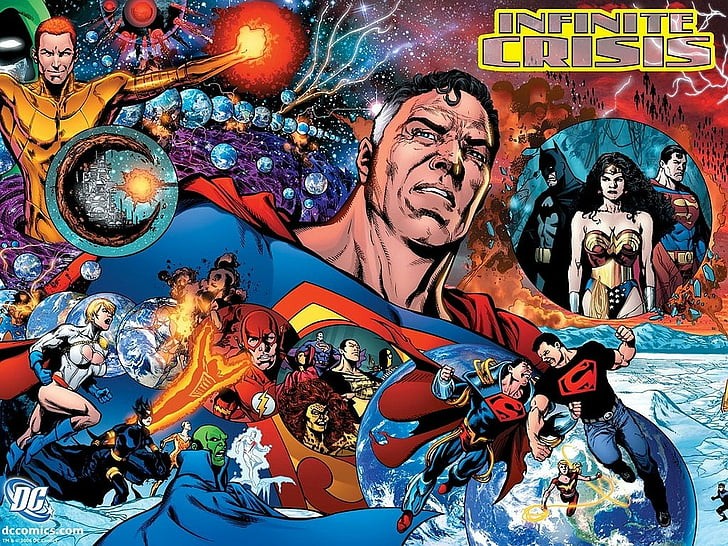
Serving as a sequel to the iconic 1985 event Crisis on Infinite Earths, this storyline delves into the darker and more complex aspects of the DC universe, exploring the consequences of past events and the tensions between its iconic heroes. The story begins with the reappearance of Alexander Luthor Jr., a survivor from an alternate Earth created during the events of Crisis on Infinite Earths. Driven by a desire for a perfect universe, Luthor recruits other characters who have experienced loss and tragedy, including Superboy-Prime and Wonder Woman’s nemesis, Maxwell Lord.
As the plot unfolds, Luthor and his allies manipulate events to create chaos and sow discord among the heroes. The Justice League faces internal conflicts, and long-standing alliances are tested. At the heart of the storyline is the conflict between Batman and Superman’s differing ideologies on how to protect the world. Meanwhile, Superboy-Prime’s rage escalates, and he becomes a powerful and destructive force. His actions trigger a crisis that threatens to tear apart the fabric of the multiverse once again. The narrative culminates in a massive confrontation that has far-reaching implications for the DC universe. This series also introduced readers to Jamie Reyes as he becomes the new Blue Beetle.
1. Crisis on Infinite Earths (1985-1986)
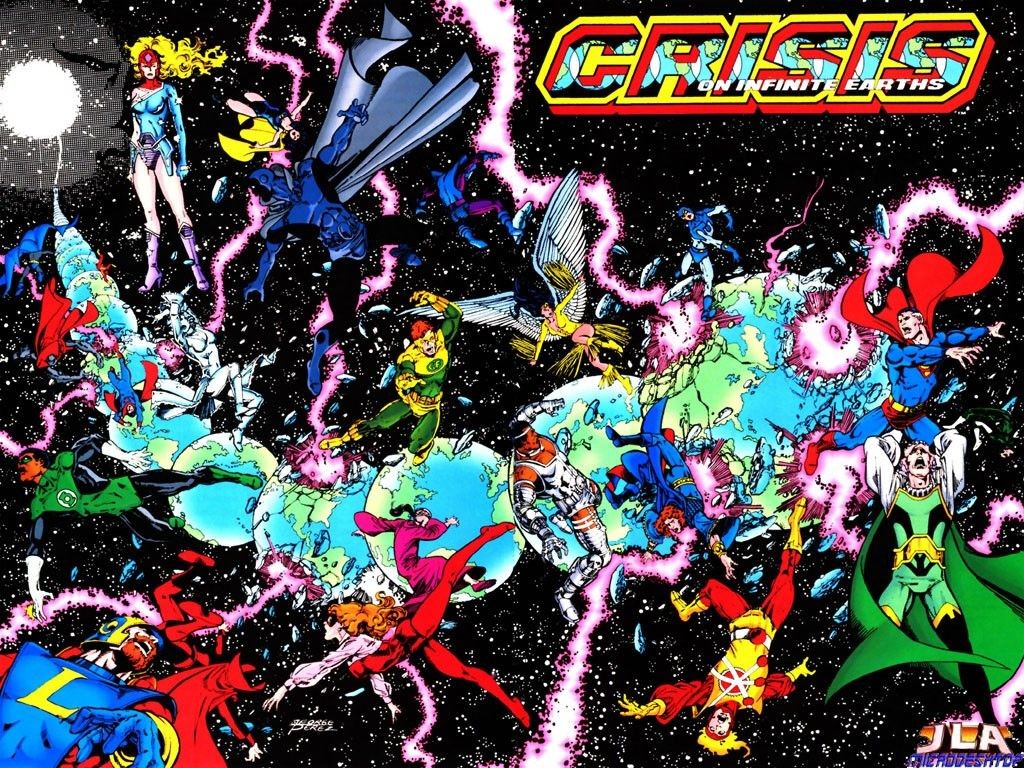
A landmark DC Comics crossover event written by Marv Wolfman and illustrated by George Pérez. This groundbreaking storyline was designed to streamline and modernize the DC universe’s convoluted multiverse, bringing together characters from various Earths and timelines into a single cohesive continuity. The event’s emotional weight is epitomized by heroic sacrifices, reminding readers of the inherent nobility of superheroism and eradicates conflicting continuities and provides a fresh start for the DC universe, paving the way for new narratives. The series also saw the merging of Charlton Comics into DC continuity, bringing in characters such as Captain Atom, Peacemaker, Ted Kord’s Blue Beetle and The Question.
The narrative centers around the Anti-Monitor, a cosmic being with the power to consume entire universes. Fueled by a desire for dominance, the Anti-Monitor seeks to eradicate all positive matter in existence, leaving only his antimatter universe. To stop this cataclysm, the Monitor, a cosmic entity from a parallel reality, assembles a group of heroes and villains to thwart the Anti-Monitor’s plans. Throughout the story, iconic heroes from different Earths, such as Superman, Batman, Wonder Woman, and The Flash, unite to battle the Anti-Monitor’s forces. The scale of the conflict is immense, spanning multiple universes and timelines. The heroes’ efforts lead to sacrifices, character transformations, and moments of heroism that define the event’s emotional core.
For more content from FandomWire, check out our LinkTree!

